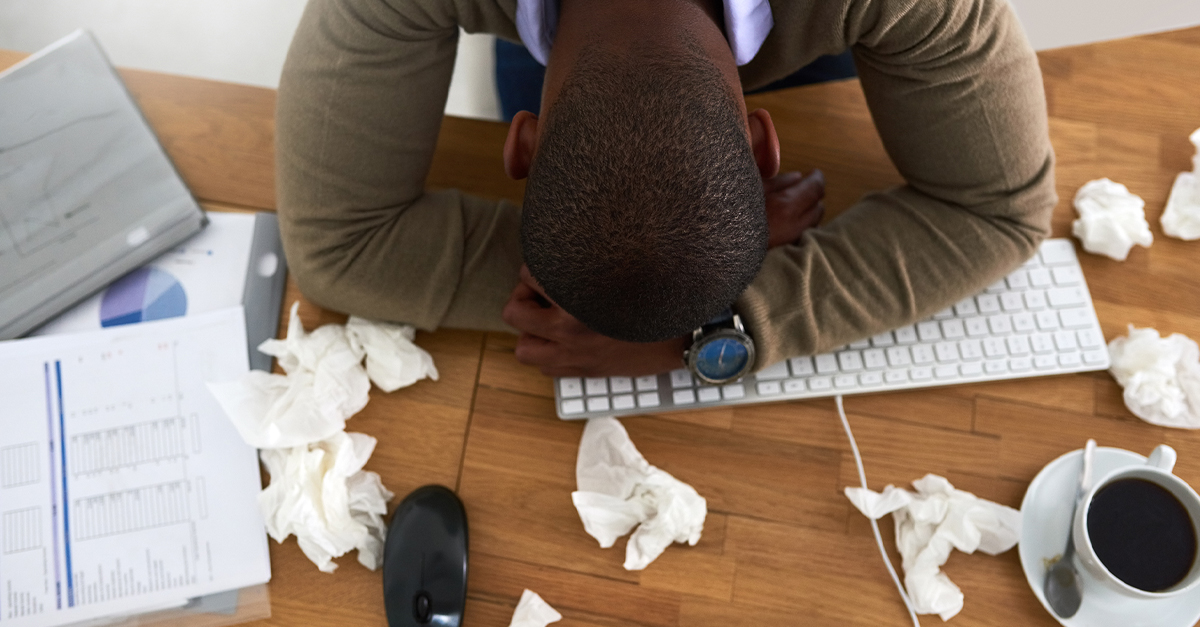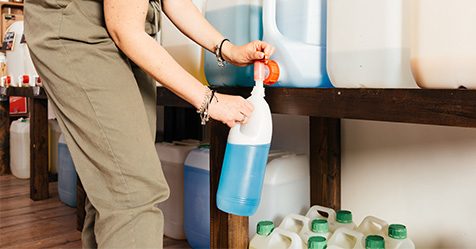Proactive facility managers, custodial teams, and building service contractors are gearing up for that time of year again: cold and flu season. The season usually runs from October through May—peaking December through February. The sooner you implement enhanced cleaning and disinfection protocols, the more successful you’ll be in reducing absenteeism, maintaining healthier indoor environments, and reassuring occupants that their well-being is a top priority.
Why disinfecting matters
Cold and flu viruses can survive on surfaces for hours or even days, making shared spaces a major factor in spreading illness. High-traffic facilities, such as schools, offices, and healthcare centers, are especially at risk. Ensuring these facilities are stocked with high-quality products, such as hospital-grade disinfectants, can help prevent the spread of germs and keep building inhabitants safe and productive.
Effective disinfection is not about appearance; it’s about stopping the spread of germs.
The lifespan of flu viruses varies from surface to surface. For hard, nonporous surfaces (like metal door handles, stainless steel, plastic):
- Influenza viruses can survive for 24 to 48 hours in measurable amounts.
- Infectious particles are strongest in the first two to eight hours, but traces can linger up to two days.
The virus typically survives for only eight to 12 hours, sometimes less, on porous surfaces like fabric, paper, or tissues. Flu viruses can live on hands for up to five minutes after contact with a contaminated surface, which is why handwashing is critical.
Unfortunately, common disinfection practices, like “spray and wipe,” often fall short. For disinfectants to work effectively, surfaces must stay visibly wet for the product’s required dwell time—usually between 30 seconds and five minutes, depending on the Environmental Protection Agency- (EPA) registered, hospital-grade List N disinfectant. Disinfectant wipes often offer better coverage because they naturally keep the contact time needed to kill pathogens.
Best practices for high-touch surfaces
Since restrooms receive most of the attention when it comes to cleaning and disinfecting, other common high-touch and high-use areas are often overlooked. These include:
- Door handles and push bars
- Light switches
- Water fountains and hydration stations
- Product dispensers
- Shared equipment and communal surfaces
Be sure to disinfect these areas more frequently throughout the day during the cold and flu season.
Posting signs and providing hand sanitizer at entrances or throughout buildings can help remind and motivate everyone to do their part in reducing the spread of illness.
Partnering with your cleaning staff
Whether working with in-house custodial teams or outside contractors, it’s essential to establish clear expectations about disinfection priorities. Consider increasing cleaning schedules and frequency during peak months, and communicate which areas require extra attention.
At the same time, encourage personal responsibility. Simple messages like “If you’re sick, stay home” and reminders to wash hands regularly can have a measurable impact. According to the U.S. Centers for Disease Control and Prevention (CDC), proper handwashing can reduce respiratory illnesses by 16 to 21%, while the World Health Organization (WHO) reports that hand hygiene can reduce the spread of infections by up to 50% in healthcare settings.
Ultimately, minimizing the impact of cold and flu season requires a multi-layered strategy: using appropriate products, applying them correctly, concentrating on high-touch surfaces, and encouraging personal hygiene. When all these elements work together, facilities can protect occupants, lower absenteeism, and show a clear commitment to health and safety.




